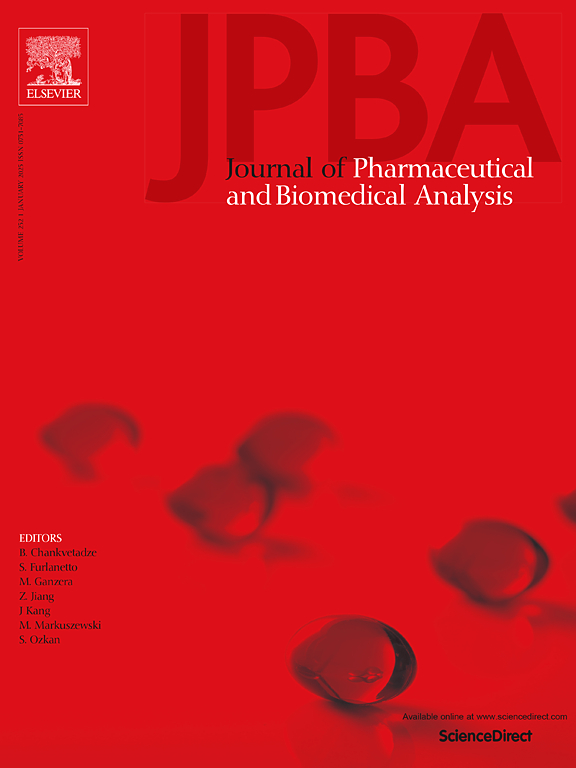New insights into the analysis of faradiol esters and related compounds in Calendula
IF 3.1
3区 医学
Q2 CHEMISTRY, ANALYTICAL
Journal of pharmaceutical and biomedical analysis
Pub Date : 2025-03-05
DOI:10.1016/j.jpba.2025.116792
引用次数: 0
Abstract
In this study, the analysis of pentacyclic triterpenediol esters (e.g., faradiol esters) in Calendula officinalis (marigold) flowers by RP-HPLC-UV and RP-UHPLC-UV-MS2 is discussed. The removal of carotenoids before HPLC-UV analysis has always been considered essential. However, this study demonstrates that this is unnecessary as the carotenoids do not interfere with the primary faradiol esters and the related compounds in the HPLC-UV chromatogram. Previously identified esters include the laurates, myristates and palmitates of faradiol and of three of its isomers (e.g., arnidiol, maniladiol and calenduladiol). This study tentatively identifies novel butyrates, caproates, caprylates, caprates, stearates, palmitoleates and oleates of faradiol and its isomers. These tentative identifications were performed using UHPLC coupled with triple quadrupole mass spectrometry (MS) through in-source fragments, product ion spectra (MS2) and parent ion spectra. Moreover, the product ion spectra of the faradiol isomers were compared. While similarities exist, some isomers were distinguishable.
求助全文
约1分钟内获得全文
求助全文
来源期刊
CiteScore
6.70
自引率
5.90%
发文量
588
审稿时长
37 days
期刊介绍:
This journal is an international medium directed towards the needs of academic, clinical, government and industrial analysis by publishing original research reports and critical reviews on pharmaceutical and biomedical analysis. It covers the interdisciplinary aspects of analysis in the pharmaceutical, biomedical and clinical sciences, including developments in analytical methodology, instrumentation, computation and interpretation. Submissions on novel applications focusing on drug purity and stability studies, pharmacokinetics, therapeutic monitoring, metabolic profiling; drug-related aspects of analytical biochemistry and forensic toxicology; quality assurance in the pharmaceutical industry are also welcome.
Studies from areas of well established and poorly selective methods, such as UV-VIS spectrophotometry (including derivative and multi-wavelength measurements), basic electroanalytical (potentiometric, polarographic and voltammetric) methods, fluorimetry, flow-injection analysis, etc. are accepted for publication in exceptional cases only, if a unique and substantial advantage over presently known systems is demonstrated. The same applies to the assay of simple drug formulations by any kind of methods and the determination of drugs in biological samples based merely on spiked samples. Drug purity/stability studies should contain information on the structure elucidation of the impurities/degradants.

 求助内容:
求助内容: 应助结果提醒方式:
应助结果提醒方式:


